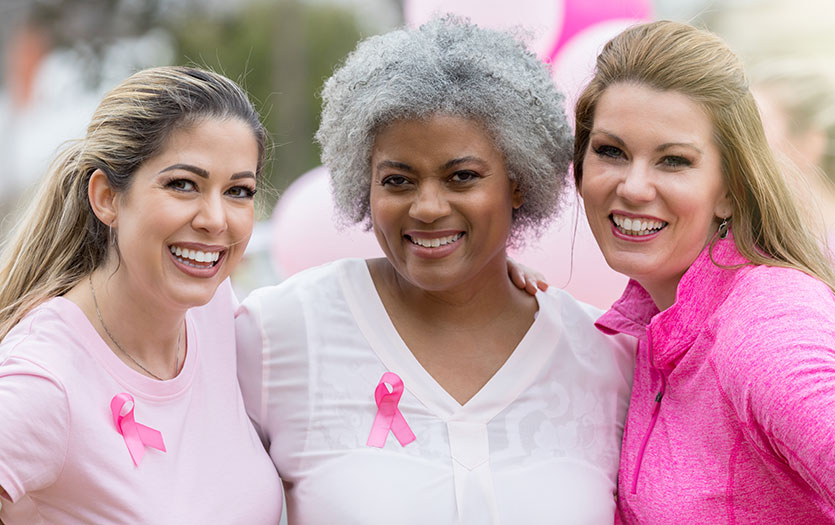
This post was written by Bridget Hurry, MD, PPG - OB/GYN Hospital Medicine.
After 40 weeks of pregnancy, labor and delivery, you might be ready to just focus all your attention on your new baby. But your body has also been through a lot and as you enter this new, postpartum stage you’ll need to rest and take care of yourself, too. Did you know that it can take your body a full six weeks to recover completely from birth? Some of these changes are internal but the full six weeks allows for your uterus and vaginal cavity to heal and return to normal. If you have or are about to enter this postpartum period, let’s take a look at what the recovery process looks like for new mothers who just experienced a vaginal delivery.
What to expect during postpartum recovery
Engorgement and tenderness
During your postpartum recovery, you will immediately notice several physical changes in your body. First, your breasts may enlarge and start to leak as the milk production process is initiated. Cabbage leaves or cold packs on the breasts can offer some relief and avoiding nipple stimulation outside of breastfeeding can help as well (i.e., only allow the shower water to hit your back, not your chest, while bathing).
Cramping
For the first few days to weeks after delivery, you may notice significant uterine cramping or "afterpains," as some women call them. This can be heightened if you have already had a previous delivery and can be exaggerated when breastfeeding. These pains are normal and will subside. Additionally, you may notice extra vaginal bleeding after these pains as well, as that is an important way that your body continues to clear out the uterine cavity. It is safe and recommended to try ibuprofen or Naprosyn for these pains if you are not allergic.
Swelling
Some swelling and tenderness locally in your vaginal area is also very normal in the first week or two after delivery. These symptoms can be worse for some women if they experienced a more significant degree of repair in their perineum after delivery. Ice to the area and rest with your legs elevated can help alleviate the pain and reduce the swelling. The use of NSAIDs (such as ibuprofen or Naprosyn if no known allergies) are also helpful for the management of these pains.
Special care
In a small handful of women, the repair after delivery could have involved the anus or rectum and special instructions may have been given per your delivering physician such as extra stool softeners and perhaps Sitz baths. It is important to review your discharge paperwork and adhere to the perineal care instructions provided by your healthcare team.
Discharge
Lastly, vaginal discharge can be noticed in some women for the full six weeks of recovery. It may be blood tinged at times or clear. It may have a less-than-fresh odor initially but should never look like pus. After a day of prolonged standing or walking, you might notice the discharge increases in amount. Some women, especially those bottle feeding, may even experience their first menses four to six weeks after delivery, so an increase in bleeding and/or discharge at this time can be expected and should resolve after five to seven days.
Tips for caring for yourself after delivery
Your body just did an amazing thing—growing a human for nine months and then delivering him or her successfully. Now it’s time to let your body recover and rest. Here are a few guidelines for postpartum recovery:
- Do not put anything in your vagina for the full six weeks of recovery—no douching, tampons or intercourse.
- Avoid submerging your perineum in any body of water such as a hot tub, bathtub or pool unless specifically cleared by your delivering physician. Showers are fine.
- Drink a lot of fluids. This is essential to your recovery and is especially important if you are breastfeeding.
- Continue to take your prenatal vitamin throughout the postpartum interval.
- If you struggle with constipation, any over-the-counter laxative such as docusate sodium can offer you some relief.
Staying physically healthy after delivery
Here are a few tips for staying physically healthy after delivery:
- Hydration. It is imperative to stay hydrated, especially if breastfeeding. A minimum of 64 ounces of water a day is essential to your body's recovery.
- Light exercise. Light exercise such as walking is fine for most patients after an uncomplicated vaginal delivery. I would recommend not starting until 2 weeks after delivery and if you find any discomfort, then it is recommended you stop.
- Eating well. A well-balanced diet is also recommended, and your caloric intake will need to increase if you are breastfeeding. Work with your pediatrician to see if there are any foods such as dairy you may need to limit while breastfeeding if there appears to be an intolerance in your newborn.
Can healing be “sped up?”
I’m often asked if there are things one can do to “speed up” the healing process. The best way to start healing quickly is to not overdo it, which can be a very hard thing to remember with a newborn and possibly other young children running around. Be willing to ask friends and family for help. The main goals of your postpartum interval should be caring for yourself, caring for your newborn, staying hydrated and sleeping whenever you can. Truly everything else, including the dishes, can wait!
Reasons to contact your doctor post-delivery
If you are experiencing any of the following after a vaginal birth, please reach out to your doctor.
Vaginal and rectal pain and pressure or a sensation of fullness can be normal in the immediate postpartum interval, but if you experience a sudden change in size or notice new swelling in your vaginal area, reach out to your doctor's office. Keep ice on your perineum and if you do not have allergies to these medications, a scheduled regimen of ibuprofen and acetaminophen can control most postpartum pain.
If you have a sudden increase in your bleeding and you are filling a maxi pad in one hour, that would be a reason to reach out to your physician's office as well.
Check out: How to care for yourself after a C-section



